Key takeaways:
- Signal integrity is essential for reliable communication; reflections and crosstalk can disrupt circuit designs significantly.
- Key factors influencing signal integrity include impedance matching, transmission line effects, and environmental factors.
- Effective techniques to improve signal integrity involve using ground planes, equalizing trace lengths, and reducing the number of vias.
- Utilizing advanced tools like oscilloscopes and network analyzers is crucial for diagnosing and enhancing signal quality.
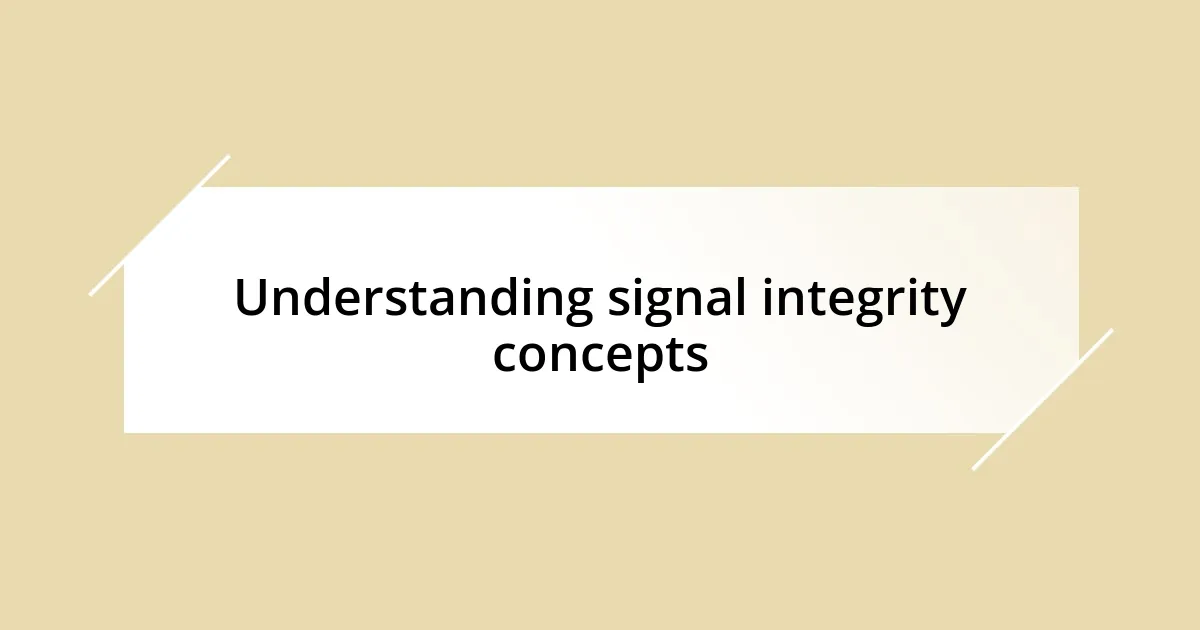
Understanding signal integrity concepts
Signal integrity is crucial in ensuring reliable communication in electronic systems. I remember the first time I encountered ringing—and how startling it was to see my signals distorted on an oscilloscope. It made me wonder: How could something so simple cause such chaos in my designs?
When discussing concepts like reflections and crosstalk, it’s striking how easily they can derail a meticulously planned circuit. I once experienced a frustrating delay because of unexpected crosstalk between two signal lines, which really underscored the importance of carefully managing PCB layout. Have you ever found yourself tracing back to the source of a signal failure, only to realize it was a tiny, overlooked detail?
Moreover, the relationship between impedance and signal integrity is something I find fascinating. I vividly recall experimenting with impedance matching—watching how small adjustments could dramatically change the outcome. It was a eureka moment! Understanding these concepts isn’t just theoretical; it can directly impact the performance and reliability of your designs.
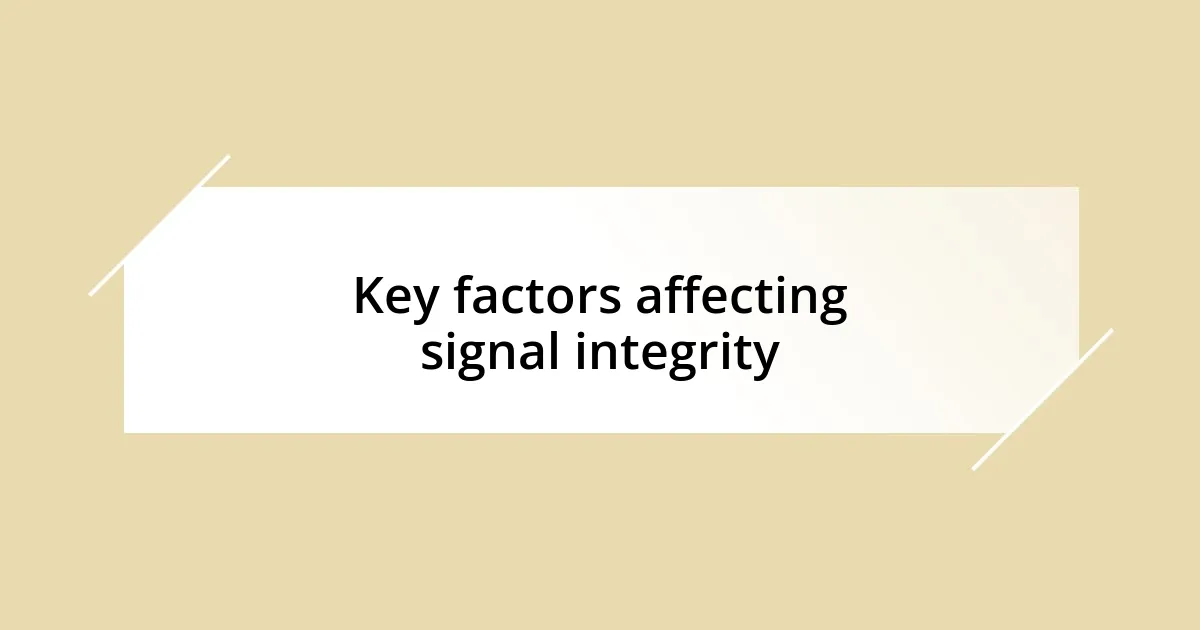
Key factors affecting signal integrity
When I dive into signal integrity, I often think about the physical characteristics of the materials involved. The substrate material of a PCB can greatly influence signal propagation. I remember the first time I switched to a high-frequency laminate; it was a game changer. The difference was like night and day—my signals became cleaner, and I could finally push my designs to the limits without the fear of distortion.
Here are some key factors affecting signal integrity:
- Impedance Matching: Ensuring the source, transmission line, and load have the same impedance to minimize reflections.
- Transmission Line Effects: Understanding how signal traces function as transmission lines, especially at high frequencies.
- Crosstalk: Minimizing unwanted coupling between adjacent traces is crucial to avoid interference.
- Voltage Level Fluctuations: Analyzing how power supply variations can introduce noise affecting signal levels.
- Environmental Factors: Considering temperature, humidity, and external electromagnetic interference, which can impact performance.
Each of these factors can pivotally influence how I approach design challenges, bringing with them unique learning experiences that continue to shape my work today.
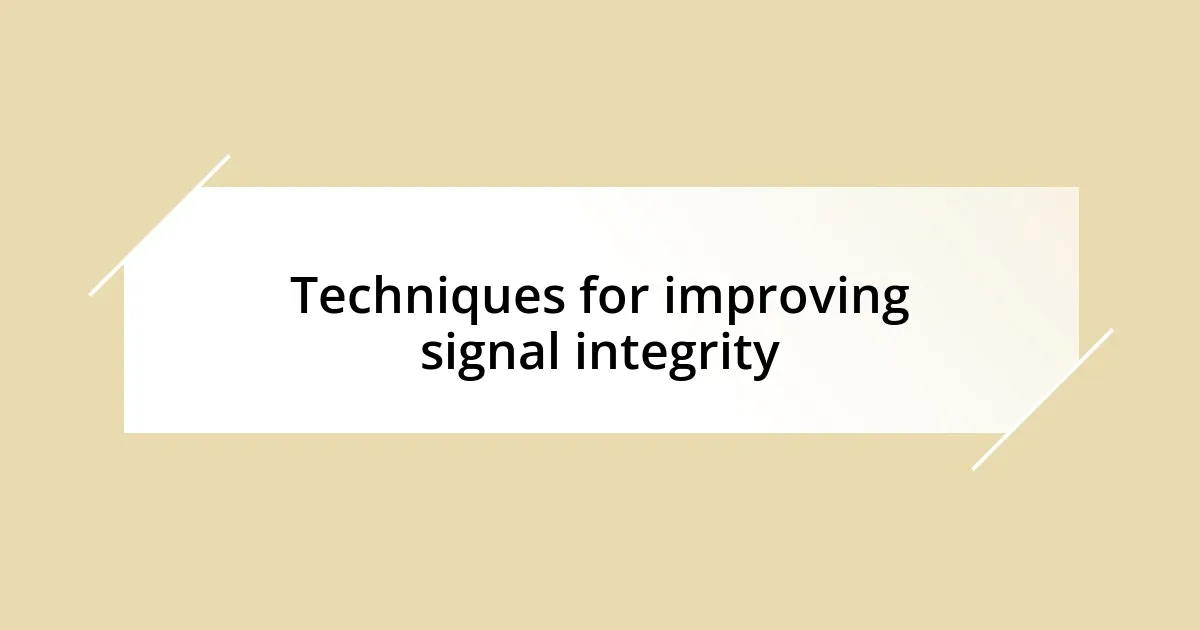
Techniques for improving signal integrity
When I think about improving signal integrity, one technique that stands out is using ground planes effectively. By incorporating a solid ground plane in my designs, I noticed a significant reduction in noise levels. It’s a straightforward adjustment, but the first time I saw those clear, stable signals on my oscilloscope after making the change was incredibly satisfying. It felt like unlocking a secret that I couldn’t believe I had overlooked for so long.
Another powerful strategy is to route signal traces with careful consideration of their lengths. I remember getting frustrated while debugging one design where I had neglected the length of the traces. By simply equalizing the lengths, I managed to greatly reduce skew and improve the timing. This experience taught me to treat trace layout with the same level of scrutiny I would give to any component placement, as every detail counts in the quest for signal integrity.
Lastly, I’ve learned that reducing the number of vias can greatly help. When I was new to PCB design, I often relied on vias to make connections, thinking they wouldn’t affect performance. However, I later discovered vias can introduce unwanted inductance and capacitance, leading to signal degradation. Eliminating unnecessary vias not only simplified my layouts but also improved overall performance. It was a turning point in my design philosophy—realizing that every tiny feature can impact the signal in a profound way.
| Technique | Description |
|---|---|
| Ground Planes | Utilizing solid ground planes can significantly reduce noise and enhance signal stability. |
| Trace Length Equalization | Routing traces of equal length minimizes skew and improves timing performance. |
| Limiting Vias | Reducing the number of vias can decrease unwanted inductance and capacitance, thus preserving signal integrity. |
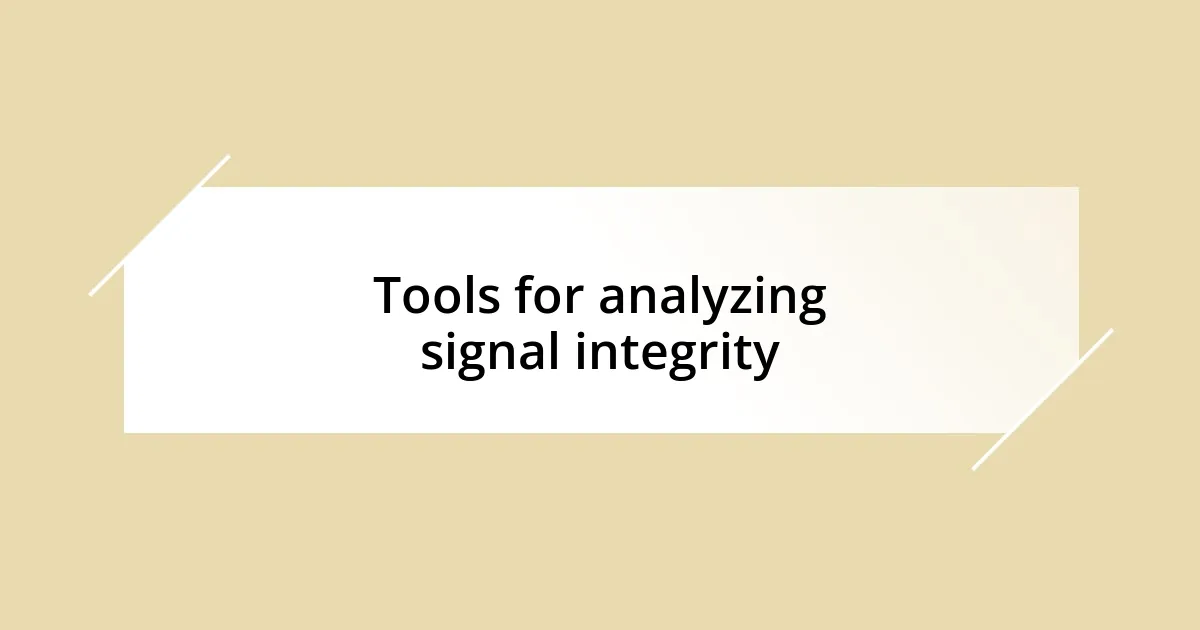
Tools for analyzing signal integrity
Having the right tools for analyzing signal integrity can be a game changer. I’ve found that using oscilloscopes with high bandwidth and fast sampling rates is essential. The first time I hooked one up to my circuit, I was amazed by how much detail I could see in the waveforms. It’s like turning on a light in a dark room; suddenly, you can spot issues like ringing or overshoot that previously went unnoticed.
In addition to oscilloscopes, I highly recommend network analyzers. They allow you to measure the reflection and transmission characteristics of your circuits. I’ll never forget the moment when I used a vector network analyzer to sweep my PCB; seeing the S-parameters helped me understand the data communication path better. It was like unlocking a map that guided me to optimize my design and troubleshoot problems faster.
Then there’s the importance of simulation software like SPICE or specialized signal integrity tools. These have been invaluable in predicting performance before I even build a prototype. I remember running simulations on a new design and being surprised by how accurate the predictions were compared to my real-world tests. It’s comforting to have this foresight; it allows me to make significant adjustments in a virtual space, saving time and resources. This workflow transformation has not only improved my designs but has also given me an edge in confidently meeting the demands of high-speed applications.
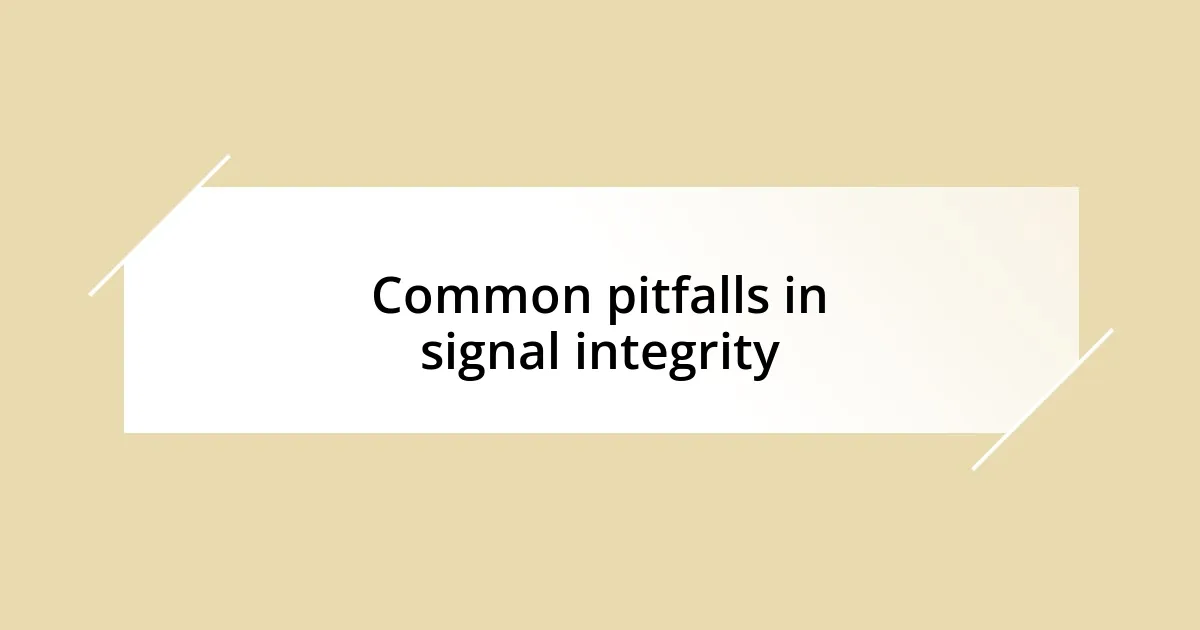
Common pitfalls in signal integrity
One common pitfall I encountered frequently in my early designs was overlooking the effects of impedance mismatches. I vividly recall a project where I spent hours chasing down intermittent signal issues, only to discover that a lack of proper termination was wreaking havoc on the integrity of my signals. It was frustrating, but that experience taught me the importance of ensuring that my traces have matched impedance. Now, I always pay careful attention to this aspect, and it’s rewarding to see the resulting clean signals on my scope.
Another mistake I made was not considering the impact of crosstalk in densely packed designs. I remember one layout where I had signal lines running too close together, leading to noise that disrupted my system’s functionality. Learning to space out traces and use differential pairs made a world of difference. It’s like giving each signal its own space to breathe; once I implemented this change, the clarity of the signals felt like a breath of fresh air.
Lastly, I can’t emphasize enough the danger of ignoring power supply noise. In one design, I hastily placed decoupling capacitors without analyzing their placement relative to sensitive components. That oversight caused a few sleepless nights as I traced back the erratic behavior of my circuit. I now approach power integrity with a strategic mindset, ensuring proper decoupling and placement to mitigate noise. Seeing improvements in performance due to these small adjustments reinforces the lesson that even minor details in power distribution can have large-scale impacts on signal integrity.














